The COIFFURE, intended for a soiree, is composed of a Grecian braid passing over the top of the head. Against this lies a basket plait, which is crossed by a Circassian braid, that likewise confines the ends of the Grecian braid below it. Frizzled puffs are worn in front, with drooping sprays of jasmine. The yellow jasmine is especially admired for this purpose.
 |
Grecian plait is woven as follows: Take a tolerably thin lock of hair, divide it into two equal parts, take from the outside of the left hand portion a very small piece of hair-about a sixth part-pass it over into the centre, and unite it with the right hand portion: do the same from the right hand portion, and pass it over into the centre, and unite it with the left hand portion; proceed thus: taking the small and even-sized lock alternately from the left and the right hand portions until all is plaited. Be careful to keep this plait very smooth.This is basically a modern "fishtail" braid. It's also, apparently, the specific plait used to make soutache or Russian braid.
Step 1: Divide the hair into two sections.
Step 2: From the right-hand section, separate out about 1/6 of the hair on the "outside" of the section (the farthest right portion). Take this bit of hair over the rest of the right-hand section into the center, and add it to the inside of the left-hand section.
Step 3: Repeat on the left: take a small (1/6) portion of the hair from the far-left side of the left-hand section, and take it over all the other hair to join the inner side of the right-hand section.
Step 4: Repeat on the right side, then the left, and continue until the braid is the desired length, or no more hair is available.
Step 5: Tie off the plait.
The finished Grecian plait is noticeably flatter than a standard three-strand-plait, while still being thick. The small sections of hair used in each pass give it an ornate appearance, while the simple passing motion allows it to progress quickly. It does take a bit longer than doing an ordinary braid.
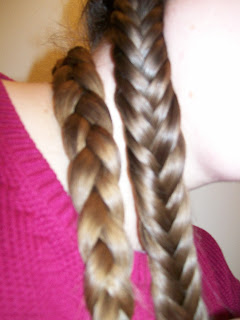 |
| Normal braid (L) and "Grecian plait" (R) |
 |
| Step 1: Divide strands into two sections. I used 12 strands, so that it'd be easy to pick up 1/6 of a section at a time (it's just one strand). |
 |
| Step 2: Take 1 strand (1/6 section) from the outside of the right/pink section, lift it over the rest of the pink section, and place it on the inside edge of the left/purple section. |
 |
| Step 3: Take 1 strand from the outside of the left/purple section and lift it over the rest of the purple section, to the inside of the right/pink section. |
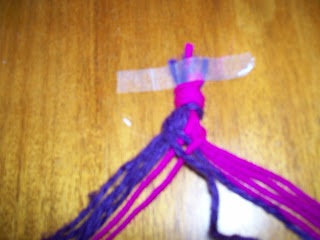 |
| Do the same on the right. |
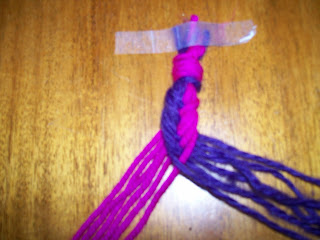 |
| One neat thin about doing two-color braid is how, after twelve passes (six on each side) the two sections have switched places. |
 |
| Make the braid as long as you want, then tie it off as normal. |


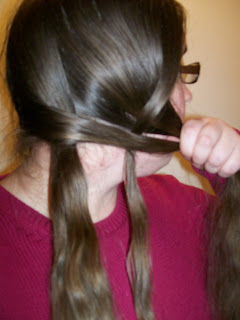

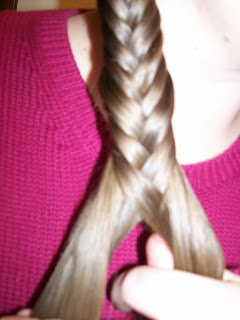

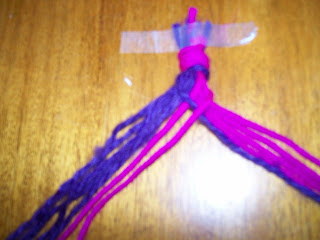
No comments:
Post a Comment
Thanks for commenting!